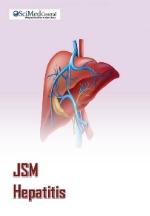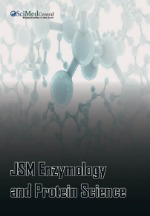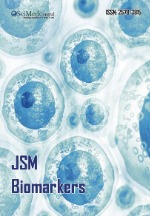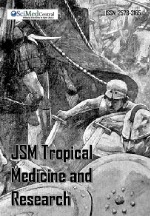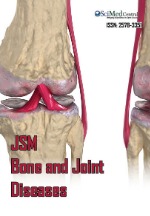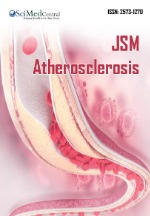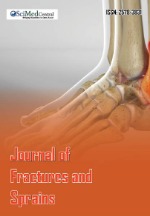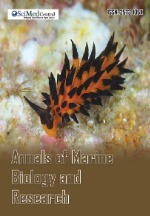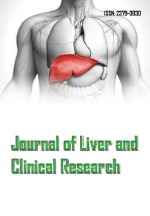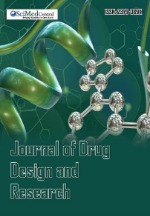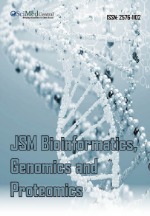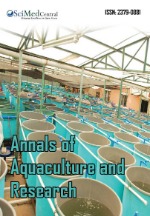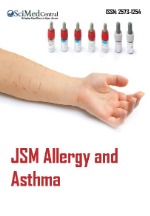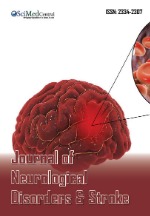Research Progress on Weeds Resistance to AHAS Inhibitors
- 1. Heilongjiang Academy of Agricultural Sciences, China
Abstract
The weed resistance has become the major factor restricting crop production, and the mechanism of weed resistance is divided into target resistance (TSR) and non- target resistance (NTSR). Target resistance includes target gene mutation and target gene overexpression, in which target gene mutation is the main factor. Non-target resistance is caused by the reduced absorption and conduction of weed to herbicide, the shielding and isolation, and the enhanced detoxification ability of weed to herbicide, in which the enhancement of weed metabolism is the primary reason. In this paper, the research progress on weed resistance to acetohydroxyacid synthase (AHAS) inhibitors was reviewed from the aspects of weed resistance, target resistance, effects of AHAS mutation on structure and function, non-target resistance and suitability of resistant weeds.
KEYWORDS
- Target Resistance
- Non-Target Resistance
- AHAS; Fitness
CITATION
Xiaotong G, Guo Y (2024) Research Progress on Weeds Resistance to AHAS Inhibitors. J Cancer Biol Res 11(2): 1148.
INTRODUCTION
China is the country that consumes the most rice in the world. Weeds have adapted to the climate, tillage, soil and other ecological conditions of rice cultivation through natural selection, and compete with rice for light, nutrients and space in production. As hosts and vectors for various diseases and pests, weeds seriously restrict the quality and high yield of rice and increase the cost of rice production and management. There are various common weeds, such as Leptochloa chinensis L., Echinochloa crusgalli L., Alisma plantago-aquatica L., Monochoria korsakowii Regel & Maack, Cyperus difformis L., and Fimbristylis miliacea (L.).
The application of herbicides is the primary method to control weeds and ensure food yield. At present, there are a variety of herbicides to control weeds in paddy, and the herbicides with different mechanisms of action have different control spectrum. For example, metamifop, cyhalofop-butyl, machette and quinclorac can be used for the control of weeds in Poaceae. The broadleaf weeds and weeds in Cyperaceae can be controlled by penoxsulam, fluroxypyr, bispyribac, dimethyltetrachloro, bensulfuron methyl, pyribenzoxim and bentazone.
Resistant weeds currently are present in 99 crop fields in 72 countries worldwide, resistant to about 167 herbicides at 21 different action sites [1]. The herbicides used to control weeds in paddy include bensulfuron methyl, pyrazosulfuron- ethyl, bispyribac, penoxsulam and MCPA-Na. Many weeds in the paddy have developed serious resistance to one or more of these herbicides as a result of the continuous us, such as Leptochloa chinensis L., Echinochloa crusgalli L. and Scirpus juncoides (Roxb.). Therefore, how to effectively control resistant weeds in paddy has become an important problem in rice cultivation worldwide with the development of weed resistance.
AHAS and AHAS inhibitors
Acetohydroxyacid synthase (AHAS) (EC2.2.1.6) is a flavin protein encoded by a nuclear gene and present in the chloroplasts of higher plants. It is a key enzyme in the synthesis of branched chain amino acids including leucine (Leu), valine (Val) and isoleucine (Ile) in plants and microorganisms, as shown in [Figure 1] [2]. AHAS cofactors are consist of thiamine pyrophosphate (ThDP), flavin adenine dinucleotide (FAD) and Mg2+. The 3-Methyl-2-oxobutanoic acid is converted from pyruvate at the first stage in leucine synthesis, and 4-methyl- 2-oxovaleric acid is produced to synthesize leucine, where the first stage is consistent with the other two amino acids synthesis [3]. Therefore, the synthesis of branched-chain amino acids is catalyzed by AHAS, and the AHAS activity is also affected by the feedback regulation of branched-chain amino acids [4].
AHAS inhibitors can inhibit the AHAS activity to interfere with the synthesis of branched-chain amino acids in plants, resulting in the failure of proteins synthesis, and eventually the growth is inhibited or stopped. AHAS only exists in organisms such as plants, fungi, bacteria and algae, thus herbicides developed with AHAS as targets are safe for mammals.
AHAS structure
Tetramer AHAS were first identified in Escherichia coli (E. coli) in 1979, with molecular of small subunits (10~20 kDa) and large subunits (60 kDa) [5,6]. The tetramer contains four active centers, which are located at the interface where the two monomers interact, thus the smallest active unit is the dimer. The structure of the large subunits is similar in different species, but the sequence and quality are different. The large subunit is the catalytic subunit containing a complete catalytic and active center, while the small subunit is the regulatory subunit, which has no catalytic activity but can promote the activity of catalytic subunit. Both of them are indispensable when AHAS is active. The catalytic subunit contains α, β and γ domains, while the regulatory subunit mainly contains the ACT domain and C-terminal domains. Studies have shown that the recombination of α and γ domains in E. coli isoenzymes can enable AHAS to complete the catalytic reaction, and the β domain can improve the activity of AHAS, which plays an important role in the regulation of AHAS activity.
AHAS inhibitors have no obvious similarity in chemical structure with AHAS cofactors, substrates or allosteric factors (valine, leucine and isoleucine), therefore, the binding site of AHAS and inhibitors is not a catalytic or regulatory site in AHAS [7]. The yeast AHAS dimer crystal structure was reported in 2002, which the complex crystal structure with sulfonylureas (SU) inhibitors was reported three years later, and the crystal structure with one imidazolinone and five SU inhibitors of Arabidopsis thaliana (L.) Heynh. was reported as a tetramer of four monomers in 2006, each consisting of α, β, γ domains, AHAS inhibitor molecules, metal ions and cofactors [8-10].
Protein crystallography is a fundamental way to study structural biology. Although great progress has been made in protein crystallography, it is still time-consuming and expensive. Computer simulation technology provides a new way to quickly obtain the crystal structure of protein or protein and small molecule complex. Homology modeling and molecular docking technology using computer are the most common methods to study protein structure and function.
RESISTANCE MECHANISM OF AHAS INHIBITORS
With the widespread use of AHAS inhibitors, there are already hundreds of weeds resistant to AHAS inhibitors, much higher than Acetyl-CoA carboxylase (ACCase), 5-enolpyruvylshikimate- 3-phosphate synthase (EPSPS) and other inhibitors, as shown in [Figure 1,2] [1]. Weed resistance mechanisms can be divided into target resistance and non-target resistance mechanisms. Target resistance includes target gene mutation and overexpression, among which amino acid mutation will affect the structure and activity of AHAS, resulting in reduced AHAS sensitivity to the inhibitors and resistance. Overexpression of target genes can also confer weed resistance [11,12]. Overexpression of target genes means that the gene expression of target enzyme increases, leading to the increased protein amount and tolerance to herbicide. Non-target resistance refers to the reduction or obstruction of the absorption and conduction of herbicides, the improvement of the metabolic ability, shielding and isolation, so that the effective quantity is reduced between herbicides and target to result in resistance [13].
Target resistance mechanisms of weeds
The cumulative number of newly discovered AHAS mutations increases year by year. Different species are classified according to the mutation types, as shown in [Figure 1-3].
Figure 1: Branched-chain amino acid biosynthesis
Figure 2: Number resistant species for several herbicide sites of action.
Figure 3: Number of species with AHAS mutations by amino acid residue numbers (Heap 2023)[1].
The mutation of site Pro197 has the highest frequency currently [1]. The resistance mechanism of Lactuca virosa L. and Kochia scoparia L. were found account for the mutation of Pro197 on AHAS [14]. The mechanism of weed resistance to herbicides has been better explained through gene cloning and sequencing analysis with the continuous development of molecular technology and related instruments. AHAS mutation can lead to structural changes, affecting the binding of AHAS with herbicide or substrate directly or indirectly, which is also the basis for the evolution of resistance to AHAS inhibitors in weeds [15]. Studies have shown that amino acids mutated in AHAS are mainly located in the domain A-F of conserved regions in AHAS including 122 (Ala), 197 (Pro), 205 (Ala), 376 (Asp), 377 (Arg), 574 (Trp), 653 (Ser), and 654 (Gly) [16-21]. The number of reported AHAS mutation types include 122Ala (5), 197Pro (13), 205Ala (2), 376Asp (1), 377Arg (1), 574Trp (4), 653Ser (3) and 654Gly (2) [1,12]. It has been reported that the Trp574 mutation changes the shape of the herbicide binding site to AHAS, conferring weed resistance [22]. For example, the resistance to imazethapyr, chlorimuron-ethyl and florasulam was conferred by Trp574Leu mutations in the AHAS of Amaranthus palmeri S. Watson [23]. Conyza canadensis L. was resistant to cloransulam-methyl, chlorimuron-ethyl and bispyribac-sodium due to the Pro197Ser/Ala and Asp376Glu mutations in AHAS [24].
Effect of mutation on AHAS structure: The conformational changes vary with the herbicide aromatic ring and heterocyclic ring when different AHAS inhibitors bind to AHAS [25]. The mutations not only affect the herbicide binding with AHAS, but also affects the substrate entering the catalytic center of AHAS. The 196Val secondary structure on AHAS is irregularly curled, and the sequence before this site is β-folded. The 197Pro is located at the entrance of the channel, which is a kind of amino acid with a circular side chain saturated hydrocarbon and certain restrictions on the spatial structure of proteins. There is a β-corner after 197Pro, thus site 197 is an amino acid in the important position. It may have different influence on the channel entrance when it is substituted by various mutations. When 197Pro is replaced by Leu, a transition can be formed in the peptide chain because the side chain of Pro is a cyclic saturated hydrocarbon. The side chain of Leu branches at the γ-carbon atom, resulting in space extrusion, which is not conducive to the formation of rotational isomers. Moreover, the side chain of Leu is larger than that of Pro, which may influence the secondary structure and internal conformation of the protein, resulting in the shape of the channel, and may also increase the difficulty of herbicide entering the herbicide binding site on the catalytic
subunit of AHAS. When 197Pro is substituted by Ser, the amino acids change from hydrophobic to hydrophilic, and the channel entrance becomes larger, which makes it easier for herbicides and substrates to enter the herbicide binding site and substrate catalytic site on AHAS. However, although herbicides can easily enter the binding site, they cannot form stable complementary structures with AHAS. Therefore, it is easy to separate from the active site, leading to the resistance. When Pro197 is mutated into Arg, the properties changes, making the original effects of Alkyl- Pi on herbicides disappear, and the binding between herbicides and enzymes decreases. The side chain of Arg is larger, making it relatively difficult for herbicides to enter the AHAS binding site. It has been reported that Arg may produce additional hydrogen bonding when binding to compounds containing methoxy group on the pyrimidine ring, which in turn reduces the inhibition of AHAS activity, resulting in the resistance [26]. When 197Pro is respectively replaced by Thr, Ala and Ser, the expansion of the channel entrance of Ala mutation is the largest, and the Thr mutation is the smallest. The resistance of Pro197Ala and Pro197Ser was mainly due to the mutation, because the residues of the two AHAS mutations were transferred outside the active site, resulting in increased expansion of the active site entrance [27]. The 376Asp site is located in the interior of the channel cavity. When it is mutated into Glu, the γ-carboxyl on the side chain has one more methylene than the β-carboxyl of Asp, and the alkane chain is longer, resulting in the narrowing of the channel and the obstruction of the binding between herbicide and AHAS. It has been reported that the side chain of Asp376Glu mutation changes direction due to the formation of four hydrogen bonds with herbicides, forming a loop with sites 192-198 to facilitate the entry of substrates [28]. It has been reported that the 574Trp mutation not only anchors herbicides to AHAS, but also plays an important role in determining the shape of substrate channels by being located in the middle of the channel entrance [9]. Trp is a class of hydrophobic amino acids with polycyclic structure, and the side chain contains indole group, which is easy to form strong π-π interaction with pyrimidine ring. In addition, the molecular weight of Trp is significantly higher than that of leucine, and when it is mutated to leucine, the channel entrance may become larger, and the herbicide cannot effectively prevent the substrate from entering the catalytic center of AHAS, resulting in the generation of resistance.
Effect of mutation on AHAS function: The changes in the AHAS structure can be caused by mutations at specific sites of AHA that reduce or prevent AHAS binding to the substrate. Studies have shown that AHAS is composed of catalytic subunits and regulatory subunits, with binding sites of substrate and herbicide on the catalytic subunit and binding sites of branched- chain amino acids on the regulatory subunit. By affecting the structure of AHAS, the mutation can affect the enzyme activity, the binding to chemicals and herbicides, and sensitivity to feedback inhibition of branched-chain amino acids.
Effects of mutations on AHAS activity and regulation of feedback inhibition: The sensitivity of AHAS to herbicides will change after mutation. AHAS is consisted of catalytic subunits and regulatory subunits. The regulatory subunit has no activity, but can greatly stimulate the activity of the catalytic subunit which is sensitive to the feedback inhibition of branch chain amino acids. Therefore, the enzyme activity of mutant AHAS in vitro may increase with the cofactor binding, the stability of the catalytic subunit and regulatory subunit. For example, different mutations have different effects on the cofactors TPP and FAD in Arabidopsis thaliana (L.) Heynh [29,30]. There are C terminal and mobile circuits in the crystal structure of yeast AHAS, which are mainly responsible for the binding and stabilization of the active dimer and the cofactor TPP. However, the binding site and the active site of herbicide are located at the interface of the catalytic subunit. The binding of AHAS with herbicides may change the geometry of the active site and lead to the alteration of enzyme activity [31]. It has been reported that the enzyme activity increases and the sensitivity to feedback inhibition decreases when the Ala205 was substituted by Val. The enzyme activity of Pro197Leu/His/Ser/ Thr mutations decreased significantly, while that of Trp574Leu increased, and that of Asp376Glu mutant enzymes did not change significantly. There was no significant change in enzyme activity of Pro197Tyr and Trp574Leu mutations [32-34].
Effect of mutation on AHAS kinetics: The gene mutation of AHAS will affect the kinetics. Km is Michaelis-constant, representing the affinity between AHAS and substrate. Vmax represents the maximum velocity of enzyme-catalyzed reaction when AHAS plays a catalytic role. Different mutations of AHAS have different effects on the affinity with substrate. The Km value of AHAS decreased and substrate affinity increased after Pro197 mutated to Ser in Stellaria aquatica L [35]. The Km decreased and Vmax increased when Pro197 mutated to Ala/ Gln in AHAS of Lolium perenne L. and mutation from Trp574 to Leu in AHAS of Alopecurus aequalis sobol [34,36]. However, the mutation of Pro197 into Arg resulted in an increase in Km and a decrease in substrate affinity for AHAS of Alopecurus aequalis sobol. and Lolium perenne L. [34,36]. However, there are also some mutations that do not change the affinity between the substrate and AHAS. For example, the affinity with the substrate does not change significantly when Pro197 is mutated into Ser and Leu in Descurainia sophia (L.) Webb ex Prantl which may be the mutation does not significantly change the binding between AHAS and the substrate [33]. Thus, the effect of mutations on AHAS function may also vary from species, but the difference from other mutations requires further study to determine whether there is an adverse effect on plant fitness.
Overexpression of target genes is also one of the reasons for weed resistance to herbicides. Overexpression of target genes is common in weed resistance to herbicides such as chlorsulfuron and glyphosate. Amaranthus palmeri S. Watson resistant to glyphosate is the result of overexpression of EPSPS [37]. In Capsella bursa-pastoris (L.) Medik, the amount of AHAS transcription in the population resistant to tribenuron-methyl was significantly higher than that in the sensitive population [37].
Non-target resistance mechanism of weeds
Non-target resistance mechanisms include increasing herbicide metabolism, decreasing herbicide absorption, transport, shielding and isolation, among which, increasing herbicide metabolism is the main one [38,39]. Non-target resistance caused by metabolism can also cause weed resistance to herbicides with different mechanisms of action. For example, in the Debregeasia orientalis C. J. Chen population resistant to 2, 4-D, the metabolic rate of 2,4-D was significantly higher than that of the sensitive population [40]. Similarly, the metabolism of 2,4-D in two populations of Papaver somniferum L. resistant to 2,4-D were enhanced [41]. The treatment of weeds with CYP450s inhibitors such as malathion or piperonyl butoxide (PBO) can reduce the resistance of Alopecurus japonicus Steud. to ACCase inhibitors, which also indicates the role of P450s in enhancing weed metabolic resistance to herbicides [42]. In Ambrosia artemisiifolia L., Amaranthus palmeri S. Watson and Raphanus raphanistrum L., the metabolic enzymes involved in metabolism of PS-II inhibitors leading to the development of resistance [43-46]. Glutathione S-transferases (GSTs) are involved in the metabolism of PS-II inhibitors, such as Amaranthus palmeri S. Watson populations resistant to atrazine, which bind to atrazine 24 times faster than sensitive populations by enhancing GSTs activity [45]. Enhanced metabolic activity of GSTs has also been found in resistant Lolium perenne L. [47]. Another glucosyltransferase (GTs) involved in the detoxification process can play a key role in secondary metabolism by forming water- soluble conjugates that are sequestrated by membrane-located transporters [48,49]. For example, GTs can further metabolize exogenous substances that have been metabolized by cytochrome P450 enzymes [48]. ABC transporters are also involved in weed detoxification of herbicides, and the full name is ATP-binding cassette transporters, which have various functions, including isolating secondary metabolites and expelling toxic compounds. It can also transport substances such as fat and phosphatidic acid, as well as some heavy metal ions and hormones to maintain the homeostasis of the internal environment of plant cells.
Weed resistance caused by absorption and transport is mainly due to the decreased ability of herbicide absorption or transport, which result in the failure of herbicide transport to the target site in the weed, so that the weed can survive. However, reducing weed uptake of herbicides is only a secondary mechanism, and it has also been shown to produce resistance in fewer species of weeds, such as prickly lettuce [50]. It is more common to reduce transport of herbicides to weed target sites. For example, the resistance has been found to be caused by reduced transport of herbicides to target sites in Raphanus raphanistrum L. [51]. In weed resistance to glyphosate, it is one of the most common NTSR mechanisms by reducing glyphosate transport to weed meristem [52]. This mechanism has been reported in Amaranthus palmeri S. Watson, Lolium rigidum Gaudich. and Debregeasia orientalis C. J. Chen [40,43,45,53,54]. However, it is very important to transport the herbicides from the application site to the growing point of the plant, and if the transport process is interfered with or limited by any factors, the control effect of the herbicide will be significantly reduced (Dale 2009) [52].
The shielding or isolation of weeds to herbicides is also one of the causes of weed resistance. This resistance mechanism is mainly manifested in changing the transport direction of herbicides, making them unable to reach the target site, and there is no obvious relationship between the retention and absorption of herbicides in weeds. Weed damage is reduced by sequestrating or transporting herbicides to areas of the weed where metabolism is weak. In fact, for contact herbicides, although the transport process is limited, there is still enough herbicide to reach the target site to kill the weed [55]. Therefore, this mechanism is not the main non-target resistance mechanism.
FITNESS FOR RESISTANT WEEDS
Fitness has two concepts including narrow sense and broad sense. Narrow fitness, just like Darwin’s “survival of the fittest”, can be used as an indicator of the survival and reproduction of organisms. Generally, it is the greater for the possibility of successful survival and reproduction when the fitness is the higher [39]. In the broad sense, the emphasis is less on survival or reproduction, and more on the ability of an organism to pass on genes to its offspring. Fitness can also be used as a standard to evaluate the adaptability of organisms to the environment through a specific index. Especially under the action of natural selection, fitness has an important impact on the evolution of weed resistance.
Weed fitness varies with the environment. The fitness of the same weed species also varies under different environmental conditions including environmental pressure, planting density, competition and parental effect [56]. Fitness cost refers to the disadvantage of resistant biotypes in fitness, hence it is also called resistance cost. The resistant biotypes have more competitive advantages than sensitive biotypes under herbicide selection, but the resistant biotypes are at a disadvantage compared with sensitive biotypes without herbicides. It has been reported that it will affect the interaction with the surrounding environment, resulting in resistance costs when weeds develop resistance [57]. Studies have shown that the resistance to glyphosate is affected by temperature in Lolium rigidum Gaudich. and Pseudosorghum fasciculare Roxb [58]. There are three explanations for the resistance cost including target gene mutation, resource limitation and interference with metabolic balance. Among them, the mutation of target gene will affect the catalytic activity of target enzyme and the binding to the substrate [59]. It has been reported that the resistance is accompanied by the phenomenon of reduced fitness in some biotypes [39,60]. It has been reported that the seed amount of the glyphosate-resistant biotype is less than that of the sensitive biotype in Ipomoea purpurea L. [61]. However, other studies have shown that resistant weeds caused by target gene mutation do not produce fitness costs [62,63]. For example, there were no significant differences in seed amount, plant biomass and competitiveness between the Kochia scoparia L. resistant biotypes and the sensitive biotypes [64,65]. It may
be the binding site of AHAS and inhibitor is far away from the active site, and the AHAS function is not affected after mutation. Thus, weed resistance genes may persist in weed populations for a certain period of time in the absence of herbicide selection pressure [66]. It has also been reported that target gene mutations confer resistance to weeds, but also improve the fitness of weeds [67]. Therefore, it may be related to a variety of factors whether the target gene mutation will have an impact on fitness. According to the theory of resource allocation, the balance between growth, reproduction and defense are disrupted when weeds develop resistance. For weeds that develop non-target resistance account for the enhancement of metabolic enzyme activity, it may reduce the energy of weeds in growth and reproduction, resulting in the emergence of fitness cost. As reported in 2009, Lolium perenne L. with metabolic resistance to ACCase, AHAS, and PSII inhibitors mediated by P450s produced fitness costs in terms of growth and fertility [68]. Studies have shown that resistance caused by overexpression of target genes can also affect the fitness [12,37,69,70].
The developing of resistant weeds is not only connected with the herbicide selection pressure, but related to the biological characteristics of weeds. The mutations, while conferring herbicide resistance to weeds, will produce a fitness cost iincluding weed growth and the ability to adapt to the environment [36,68]. The fitness cost of weeds caused by mutations may be mainly due to the effect of amino acid mutation on enzyme function, including the change of enzyme activity, the affinity between substrate and enzyme, or the effect of amino acid feedback inhibition, and eventually the result of excessive or insufficient production of products. However, it has also been reported that the mutation does not cause a fitness cost. It has been reported that the five AHAS mutant types in resistant Lolium rigidum Gaudich. showed no significant difference from the sensitive type in the growth process, which may be because the five mutations did not affect the enzyme function [36]. This phenomenon has also been reported in Raphanus raphanistrum L. resistant to AHAS inhibitors [62].
In summary, it is very important to understand the resistance cost when weeds develop resistance to certain inhibitors for predicting the evolutionary trend of weed mutations, and it can also better understand the development law of weed resistance, so as to improve the management of resistant weeds.
FUNDING
This work was financially supported by the “Resistance Level Difference Mechanism of Different Mutant Biotypes in Cyperus difformis L. (CX22YQ16)” and “Integration, demonstration and promotion of efficient prevention and control technologies of crop and grass damage (CX23GG14)”.
REFERENCES
- Heap I. The International Herbicide-Resistant Weed Database. Online. Weed Sci. 2023.
- Duggleby RG, McCourt JA, Guddat LW. Structure and mechanism of inhibition of plant acetohydroxyacid synthase. Plant Physiol Biochem. 2008; 46: 309-324.
- Larossa RA, Schloss JV. The sulfonylurea herbicide sulfometuron methyl is an extremely potent and selective inhibitor of acetolactate synthase in Salmonella typhimurium. J Biol Chem. 1984; 259: 8753- 8757.
- Pang SS, Guddat LW, Duggleby RG. Molecular basis of sulfonylurea herbicide inhibition of acetohydroxyacid synthase. J Biol Chem. 2003; 278: 7639-7644.
- Lawther RP, Brian N, Gerard Z, Wesley HG. The nucleotide sequence preceding and including the beginning of the ilvE gene of the ilvGEDA operon of Escherichia coli K12. Nucleic Acids Res. 1980; 7: 2289- 2301.
- Schloss JV, Dyk DV, Vasta JF, Kutny RM. Purification and properties of Salmonella typhimurium acetolactate synthase isozyme II from Escherichia coli HB101/pDU9. Biochem. 1985; 24: 4952-4959.
- Otwinowski Z, Minor W. [20] Processing of X-ray diffraction data collected in oscillation mode - ScienceDirect. Method Enzymol. 1997; 276: 307-326.
- Mccourt J, Pang S, Guddat L, Duggleby R. Elucidating the specificity of binding of sulfonylurea herbicides to acetohydroxyacid synthase. Biochem. 2005; 44: 2330-2338.
- Mccourt JA, Pang SS, King-Scott J, Guddat LW, Duggleby RG. Herbicide- binding sites revealed in the structure of plant acetohydroxyacid synthase. Proc Natl Acad Sci U S A. 2006; 103: 569-573.
- Pang SS, Duggleby RG, Guddat LW. Crystal structure of yeast acetohydroxyacid synthase: a target for herbicidal inhibitors11Edited by R. Huber. J Mol Bio. 2002; 317: 249-262.
- Dewaele E, Forlani G, Degrande D, Nielsen E, Rambour S. Biochemical characterization of chlorsulfuron resistance in Cichorium intybus L. var. Witloof J Plant Physiol. 1997; 151: 109-114.
- Powles SB, Yu Q. Evolution in action: plants resistant to herbicides. Annu Rev Plant Biol. 2010; 61: 317-347.
- Délye C. Unravelling the genetic bases of non-target-site-based resistance (NTSR) to herbicides: a major challenge for weed science in the forthcoming decade. Pest Manag Sci. 2013; 69: 176-187.
- Guttieri MJ, Eberlein CV, Mallory-Smith CA, Thill DC, Hoffman DL. DNA sequence variation in domain A of the acetolactate synthase genes of herbicide-resistant and -susceptible weed biotypes. Weed Sci. 1992; 40: 670-677.
- Gaines TA, Duke SO, Morran S, Rigon C, Tranel PJ, Küpper A. et.al. Mechanisms of evolved herbicide resistance. J Biol Chem. 2020; 295: 10307-10330.
- Devine M, Shukla A . Altered target sites as a mechanism of herbicide resistance. Crop Protection. 2000; 19: 881-889.
- Laplante J, Rajcan I, Tardif FJ. Multiple allelic forms of acetohydroxyacid synthase are responsible for herbicide resistance in Setaria viridis. Theor Appl Genet. 2009; 119: 577-585.
- Matzrafi M, Lazar TW, Sibony M, Rubin B. Conyza species: distribution and evolution of multiple target-site herbicide resistances. Planta. 2015; 242: 259-267.
- Massa D, Krenz B, Gerhards R. Target-site resistance to ALS- inhibiting herbicides in Apera spica-venti populations is conferred by documented and previously unknown mutations. Weed Res. 2011; 51: 294-303.
- Riar DS, Norsworthy JK, Srivastava V, Nandula V, Bond JA, Scott RC. Physiological and Molecular Basis of Acetolactate Synthase-Inhibiting Herbicide Resistance in Barnyardgrass (Echinochloa crusgalli). J Agric Food Chem. 2013; 61: 278-289.
- Varanasi VK, Godar AS, Peterson DE, Shoup D, Jugulam M. A Target- Site Point Mutation in Henbit (Lamium amplexicaule) Confers High- Level Resistance to ALS-Inhibitors. Weed Sci. 2016; 64: 231-239.
- Vercellino RB, Pandolfo CE, Breccia G, Cantamutto M, Presotto A. AHAS Trp574Leu substitution in Raphanus sativus L.: screening, enzyme activity and fitness cost. Pest Manag Sci. 2018; 74: 1600- 1607.
- Larran AS, Palmieri VE, Perotti VE, Lieber L, Permingeat HR. Target- site resistance to acetolactate synthase (ALS)-inhibiting herbicides in Amaranthus palmeri from Argentina. Pest Manag Sci. 2017; 73: 2578-2584.
- Zheng D, Kruger GR, Singh S, Davis VM, Tranel PJ, Weller SC, et al. Cross-resistance of horseweed (Conyza canadensis) populations with three different ALS mutations. Pest Manag Sci. 2011; 67: 1486-1492.
- Garcia MD, Nouwens A, Lonhienne TG, Guddat LW. Comprehensive understanding of acetohydroxyacid synthase inhibition by different herbicide families. Proceed Natl Acad Sci. 2017; 114: E1091-E1100.
- Jan?a GA, Delgado EJ, Medina FE. How Important Is the Synclinal Conformation of Sulfonylureas To Explain the Inhibition of AHAS: A Theoretical Study. J Chem Inf Model. 2014; 54: 926-932.
- Choe M, Choe W, Lee I, Wu M, Liu S. Computational analysis of mutated AHAS in response to sulfonylurea herbicides. Weed Res. 2015; 55: 359-369.
- Garcia MD, Chua SMH, Low YS, Lee YT, Guddat LW, Agnew-Francis K. Commercial AHAS-inhibiting herbicides are promising drug leads for the treatment of human fungal pathogenic infections. Proc Natl Acad Sci U S A. 2018; 115: E9649- E9658.
- Chang AK, Duggleby RG. Herbicide-resistant forms of Arabidopsis thaliana acetohydroxyacid synthase: characterization of the catalytic properties and sensitivity to inhibitors of four defined mutants. Biochem J. 1998; 333: 765-777.
- Lee YT, Duggleby RG. Identification of the regulatory subunit of Arabidopsis thaliana acetohydroxyacid synthase and reconstitution with its catalytic subunit. Biochem. 2001; 40: 6836-6844.
- Kim J, Beak DG, Kim YT, Choi JD, Yoon MY. Effects of deletions at the C-terminus of tobacco acetohydroxyacid synthase on the enzyme activity and cofactor binding. Biochem J. 2004; 384: 59-68.
- Ashigh J, Tardif FJ. An Ala 205 Val substitution in acetohydroxyacid synthase of eastern black nightshade (Solanum ptychanthum) reduces sensitivity to herbicides and feedback inhibition. Weed Sci. 2007; 55: 558-565.
- Yang Q, Deng W, Wang SP, Liu HJ, Li XF, Zheng MQ. Effects of resistance mutations of Pro197, Asp376 and Trp574 on the characteristics of acetohydroxyacid synthase (AHAS) isozymes. Pest Manag Sci. 2018; 74: 1870-1879.
- Zhao N, Yan YY, Du L, Zhang XL, Liu WT, Wang JX. Unravelling the effect of two herbicide resistance mutations on acetolactate synthase kinetics and growth traits. J Exp Bot. 2020; 71: 3535-3542.
- Liu W, Bai S, Jia S, Guo W, Zhang L, Li W, et al. Comparison of ALS functionality and plant growth in ALS-inhibitor susceptible and resistant Myosoton aquaticum L. Pest Biochem Physiol. 2017; 142: 111-116.
- Yu Q, Han H, Vila-Aiub MM, Powles SB. AHAS herbicide resistance endowing mutations: effect on AHAS functionality and plant growth. J Exp Botany. 2010; 61: 3925-3934.
- Gaines T, Wenli Z, Dafu W, Bukun B, Chisholm ST, Shaner DL, et al. Gene amplification confers glyphosate resistance in Amaranthus palmeri. Pro Natl Acad Sci U S A. 2010; 107: 1029-1034.
- Fischer AJ, Bayer DE, Carriere M, Ateh CM, Yim KO. Mechanisms of Resistance to Bispyribac-Sodium in an Echinochloa phyllopogon Accession. Pesticide Biochem Physiol. 2000; 68: 156-165.
- Park KW, Mallory-Smith CA, Ball DA, Mueller-Warrant GW. Ecological fitness of acetolactate synthase inhibitor–resistant and –susceptible downy brome (Bromus tectorum) biotypes. Weed Sci. 2004; 52: 768- 773.
- Figueiredo MR, Leibhart LJ, Reicher ZJ, Tranel PJ, Nissen SJ, Westra P, et al. Metabolism of 2,4-dichlorophenoxyacetic acid contributes to resistance in a common waterhemp (Amaranthus tuberculatus) population. Pest Manag Sci. 2018; 74: 2356-2362.
- Joel T, Rojano-Delgado AM, Jordi RC, Aritz RE, Salas ML, Rafael DP. Enhanced 2,4-D Metabolism in Two Resistant Papaver rhoeas Populations from Spain. Front Plant Sci. 2017; 8: 1584.
- Feng Y, Gao Y, Zhang Y, Dong L, Li J. Mechanisms of Resistance to Pyroxsulam and ACCase Inhibitors in Japanese Foxtail (Alopecurus japonicus). Weed Sci. 2016; 4: 695-704.
- Chahal PS, Jugulam M, Jhala AJ. Mechanism of atrazine resistance in atrazine- and HPPD inhibitor-resistant Palmer amaranth (Amaranthus palmeri S. Watson) from Nebraska. Can J Plant Sci. 2019; 99.
- Lu H, Yu Q, Han H, Owen MJ, Powles SB. Metribuzin Resistance in a Wild Radish (Raphanus raphanistrum) Population via Both psbA Gene Mutation and Enhanced Metabolism. J Agric Food Chem. 2019; 67: 1353-1359.
- Nakka S, Godar AS, Thompson CR, Peterson DE, Jugulam M. Rapid detoxification via glutathione S-transferase (GST) conjugation confers a high level of atrazine resistance in Palmer amaranth (Amaranthus palmeri). Pest Manag Sci. 2017; 73: 2236-2243.
- Simard MJ, Martin Laforest, Brahim Soufiane, Lyse Benoit D, Tardif JF, ChristianWillenborg. Linuron-resistant common ragweed (Ambrosia artemisiifolia) populations in Québec carrot fields: presence and distribution of target site and non-target site resistant biotypes. Can J Plant Sci. 2018; 98: 345-352.
- Dücker R, Zllner P, Parcharidou E, Ries S, Beffa R. Enhanced metabolism causes reduced flufenacet sensitivity in black?rass ( Alopecurus myosuroides Huds.) field populations. Pest Manag Sci. 2019; 75: 2996-3004.
- Coleman J, Blake-Kalff M, Davies E. Detoxification of xenobiotics by plants: chemical modification and vacuolar compartmentation. Trends Plant Sci. 1997; 2: 144-151.
- Yuan JS, Tranel PJ, Stewart CN. Non-target-site herbicide resistance: a family business. Trends Plant Sci. 2007; 12: 6-13.
- Riar DS, Burke IC, Yenish JP, Bell J, Gill K. Inheritance and Physiological Basis for 2,4-D Resistance in Prickly Lettuce (Lactuca serriola L.). J Agric Food Chem. 2011; 59: 9417-9423.
- Danica G, Gregory C, Stephen P. 2,4-D resistance in wild radish: reduced herbicide translocation via inhibition of cellular transport. J Exp Botany. 2016; 67: 3223-3235.
- Dale S. Role of Translocation as a Mechanism of Resistance to Glyphosate. Weed Sci. 2017; 57: 118-123.
- Adu-Yeboah P, Malone JM, Gill G, Preston C. Reduced Glyphosate Translocation in Two Glyphosate-Resistant Populations of Rigid Ryegrass (Lolium rigidum) from Fence Lines in South Australia. Weed Sci. 2017; 62: 4-10.
- Bostamam Y, Malone JM, Dolman FC, Boutsalis P, Preston C. Rigid Ryegrass (Lolium rigidum) Populations Containing a Target Site Mutation in EPSPS and Reduced Glyphosate Translocation Are More Resistant to Glyphosate. Weed Sci. 2017; 60: 474-479.
- Soar CJ, Karotam J, Preston C, Powles SB. Reduced paraquat translocation in paraquat resistant Arctotheca calendula (L.) Levyns is a consequence of the primary resistance mechanism, not the cause. Pest Biochem Physiol. 2003; 76: 91-98.
- Di K, Stewart CN, Wei W, Shen B, Tang Z, Ma K. Fitness and maternal effects in hybrids formed between transgenic oilseed rape (Brassica napus L.) and wild brown mustard [B. juncea (L.) Czern et Coss.] in the field. Pest Manag Sci. 2009; 65: 763-60.
- Strauss SY, Rudgers JA, Lau JA, Irwin RE. Direct and ecological costs of resistance to herbivory. Trends Ecol Evolution. 2002; 17: 278-285.
- Vila-Aiub MM, Gundel PE, Yu Q, Powles SB. Glyphosate resistance in Sorghum halepense and Lolium rigidum is reduced at suboptimal growing temperatures. Pest Manag Sci. 2013; 69: 228-232.
- Chevillon C, Pasteur N, Marquine M, Heyse D, Raymond M. Population Structure and Dynamics of Selected Genes in the Mosquito Culex pipiens. Evolution. 1995; 49: 997-1007.
- Massinga RA, Al-Khatib K, St. Amand P, Miller JF. Relative fitness of imazamox-resistant common sunflower and prairie sunflower. Weed Sci. 2005; 53: 166-174.
- Baucom RS, Mauricio R. Fitness costs and benefits of novel herbicide tolerance in a noxious weed. Proc Natl Acad Sci U S A. 2004; 101: 13386-13390.
- Li M, Yu Q, Han H, Vila-Aiub M, Powles SB. ALS herbicide resistance mutations in Raphanus raphanistrum: evaluation of pleiotropic effects on vegetative growth and ALS activity. Pest Manag Sci. 2013; 69: 689-695.
- Papapanagiotou AP, Paresidou MI, Kaloumenos NS, Eleftherohorinos IG. ACCase mutations in Avena sterilis populations and their impact on plant fitness. Pest Biochem Physiol. 2015; 123: 40-48.
- Christoffoleti PJ, Moore F. Growth Analysis of Sulfonylurea-Resistant and -Susceptible Kochia (Kochia scoparia). Weed Sci. 1997; 45: 691- 695.
- Thompson CR, Thill DC, Mallory Smith CA, Shafii B. Characterization of chlorsulfuron resistant and susceptible kochia (Kochia scoparia). Weed Technol. 1994; 8: 470-476.
- Yu Q, Powles SB. Resistance to AHAS inhibitor herbicides: current understanding. Pest Manag Sci. 2014; 70: 1340-1350.
- Wang T, Picard JC, Tian X, Darmency H. A herbicide-resistant ACCase 1781 Setaria mutant shows higher fitness than wild type. Heredity. 2010; 105: 394-400.
- Vila-Aiub MM, Neve P, Powles SB. Fitness costs associated with evolved herbicide resistance alleles in plants. New Phytol. 2009; 184: 751-767.
- Gaines TA, Shaner DL, Ward SM, Leach JE, Westra P. Mechanism of resistance of evolved glyphosate-resistant Palmer amaranth (Amaranthus palmeri). J Agric Food Chem. 2011; 59: 5886-5889.
- Vila-Aiub MM, Goh SS, Gaines TA, Han H, Busi R, Yu Q, et al. No fitness cost of glyphosate resistance endowed by massive EPSPS gene amplification in Amaranthus palmeri. Planta. 2014; 239: 793-801.


![Figure 3 Number of species with AHAS mutations by amino acid residue numbers (Heap 2023)[1].](https://www.jscimedcentral.com/public/assets/images/uploads/image-1738220996-1.PNG)














